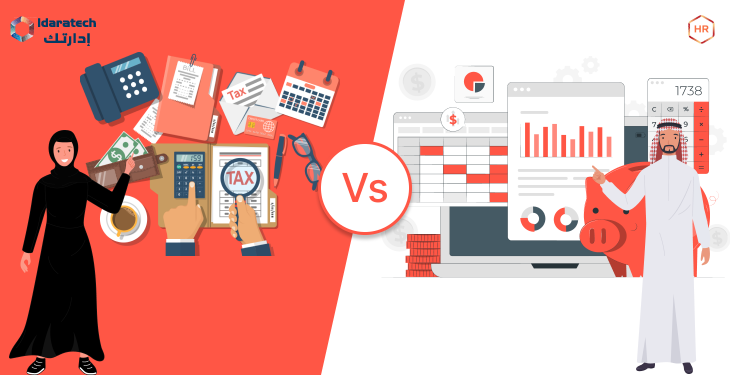Every organization needs to manage the accounts and keep track of employee attendance, which is primarily the responsibility of the human resource department. The management does this by correctly calculating the payroll and complying with the taxing authority. However, it affects employee morale and the company’s financial soundness. Hence, payroll management must be carried out in a uniform and unified manner by every business.
On the market today, manual payroll processing is still used by the majority of businesses. The two primary responsibilities of payroll management services are as follows:
- The process of preparing payroll inputs
- Generating payroll reports
Thus, the business determines the wages it pays its employees. The standard payroll checklist calls for you to keep the following aggregated documents on hand as well:
- Current employee database
- Complete new hire paperwork
- Monitoring upcoming employee departures
- Keeping track of sick days and vacation schedules
- Salary adjustments and other modifications
- Info on authorized absences and overtime
Yet the question now has to be answered which payroll is superior in Manual Payroll vs Automated Payroll System.
In this blog, you will learn everything you need about the distinctions, advantages or drawbacks of manual payroll and automated payroll. Let’s check out:
What is a Manual payroll system?

Manual payroll refers to calculating and cutting employee paychecks without the help of software or a payroll specialist. Most business owners should let software or a professional handle the number crunching; however, some small business owners do payroll by hand to save money.
You might be a suitable candidate for manually processing payroll if your company only has a few employees and you are well-versed in payroll tax regulations. However, you’re better off using software in any other situation.
Here are the pros and cons of a manual payroll system.
Pros of Manual Payroll System
- Reduced Cost: While comparing manual payroll vs automated payroll system, Manual accounting is less expensive than an automated computerized payroll system, which needs a computer and software. The cost of this method will eventually equal that of the automated payroll system, and it might even prove to be more expensive. Due to the cost of the extra resources consumed, the time required to analyze the information, and the cost of the internet connection, paper, and calculators.
- More customization options: A wider variety of customization is possible with manual payroll processes, which can be tailored to the requirements of the business and the employees.
- Small businesses oriented: This system performs best when used in a small business with a small workforce.
Cons of Manual Payroll System
- More prone to error-causing: The massive margin for error in this approach is one of its drawbacks. More mistakes are anticipated if the payroll representative performs more manual calculations. Also, it takes longer since the employee must verify the payroll is accurate and double-check the information before printing checks.
- More time-consuming: Checking spreadsheets, figuring out various forms of payments, and manually writing checks are all part of manual payroll. Each pay period, even with a handful of employees, a significant amount of time is spent on this work.
- Slow data valuation: The data won’t be accessible instantly. This is because it requires more manual labor and more data transcription work. The availability of reports might take time. Any analysis of the information will demand focused attention and time. Yet, since it is up to individuals to carry them out, a more extensive range of studies is feasible.
- Requires prior training: All the new hires would require payroll management skills. They would also need to be knowledgeable about compliance issues and regulatory legislation.
A manual payroll serves a small business with a few employees. To meet the company’s needs, it can be modified and tailored. In contrast to an automated system, it might be more adaptable. Due to the lower expenditure needed, it is also simpler to obtain.
What is Automated Payroll System?

The former takes more time when comparing manual payroll processing to automated payroll. If you also consider that you will deal with compliance, then your HR Employees will have a sizable task at hand each pay period.
As a result, paying employees involves an automated payroll system, which entails calculating earnings and withholdings for taxes and employee benefits. In addition, the payroll may also include business documents about the distribution of paychecks and employee wages. Although crucial, this process can be expensive and time-consuming. Here, automation has a significant impact.
By using software to streamline payroll processing, payroll automation decreases the amount of human input. Calculating tax withholdings, submitting taxes, and processing direct deposits are all made more accessible by payroll automation. These solutions for finance teams can help save time and money, particularly during the pay period.
Here are the pros and cons of an automated payroll system:
Pros of Automated Payroll System
- Time savings: Only some people enjoy discussing accounting, taxes, and payroll. We understand that many business owners prefer to use their time for other activities. Payroll software streamlines the payroll procedure, freeing up your time to focus on different aspects of your company.
- Professional assistance: Most payroll solutions include customer support that can guide you through unfamiliar compensation concerns, from wage garnishment to the taxability of fringe benefits.
- Tax compliance: Payroll tax rates are subject to annual change, and it can be challenging to keep up with all the new local taxes that may apply to employee wages. Knowing that software is in charge of correctly calculating payroll might help you sleep better at night.
- Document management: Payroll recordkeeping is required by the IRS, Social Security Administration (SSA), and Fair Labor Standards Act (FLSA). Payroll software providers can assist you in securely and appropriately storing the relevant records because they know these standards.
- Report generation: Lenders and investors may request payroll data to evaluate employee salaries. Payroll analytics reports can be produced by payroll software in minutes.
Cons of Automated Payroll System
- The investment cost is a little higher: Even if the initial investment is slightly more significant in this instance, automated payroll solutions won’t take up a lot of time or resources. So, in the long term, it is also a less expensive choice.
- Responsible for managing your taxes: Your automated payroll employee is responsible for managing your taxes and must ensure that all information is entered accurately and that payments are delivered on schedule. Heavy fines may result from incomplete paperwork and incorrect tax payments.
- Backing up all of your data: You should also consider the physical and digital security of the machines on which the payroll software will be installed. It is highly advised that you use strong passwords and antivirus software.
While comparing manual payroll vs automated payroll system, Using an automated payroll system, then, would result in financial savings in the future. Moreover, these savings in time and money result from accurate automated computation instead of errors in human payroll accounting.
Manual Payroll vs Automated Payroll System

In the manual payroll vs automated payroll system, a manual payroll system involves the use of paper-based documents and spreadsheets to calculate and process employee pay. In contrast, an automated payroll system uses software and electronic tools to manage and streamline the payroll process.
Here are some of the key differences of manual payroll vs automated payroll system :
| Basic | Manual Payroll System | Automated Payroll System |
| Effort | Individuals manage the entire payroll procedure. Without using any systems, this is entirely accomplished by hand. | An automated system can be used to manage the complete payroll procedure. As a result, little human effort is needed. |
| Consistency | This system is more susceptible to errors. It is incredibly reliant on how dynamic human activity is. | Consistency is difficult to find in automated systems. People are reliant on digital equipment. |
| Security | This approach is less secure since it requires a lot of paperwork and offers limited room for encryption. However, it is unnecessary for those who want to misuse the data to be proficient in compromising data security. | Data is encrypted and password-protected in this technique, making it more secure. As a result, the system’s security could only be compromised by expert hackers. |
| Suitability | This system would work well for a tiny business with a sparse crew. | This system is equipped to assist big businesses. In addition, it may serve a sizable workforce dispersed across several locations. |
| Environment-friendly | This process leaves a significant paper trail. It is, therefore, the less environmentally beneficial choice of the two. | This approach is more efficient and uses less paper. As a result, the environment benefits more from it. |
| Customer Satisfaction | This approach takes more time. It is prone to mistakes, which could lead to employee unhappiness. | Automatic systems are quicker, more precise, and more dependable. In addition, they guarantee accurate and on-time wage payments. As a result, employees would be more satisfied. |
| Speed | Due to the need for manual management of each step in the payroll process, this is a time-consuming procedure. | This procedure takes substantially less time. In addition, almost every stage in the payroll process has the potential to be automated. |
| Accuracy | Human error has a plethora of possible outcomes. | This technology reduces the need for human intervention, therefore eliminating human mistakes. Errors are minor in scope. |
Overall, in the key differences of manual payroll vs automated payroll system, an automated payroll system can offer significant advantages over a manual system, including increased efficiency, accuracy, scalability, and security. While an automated system may require an initial investment in software and hardware, the long-term cost savings and benefits can outweigh the initial costs.
Comparison of Manual and Automated Payroll System
- While comparing manual payroll vs automated payroll system, the aspect of speed is where there is a significant difference. Accounting computer software automatically processes all the data and produces results. Few chances of inaccuracy and quick and reliable results are provided.
- Cost-wise comparison of manual payroll vs automated payroll system, the human resource management system’s manual accounting is less expensive. However, you’ll need a calculator, paper, and a pen or pencil. In addition to other costs like training, program upkeep, etc., automated payroll management has a set cost.
- Manual systems are particularly insecure in terms of security. This is because other persons could quickly glance at the documents and abuse this knowledge. Yet with automation, all the data stays secured inside the program. As a result, you can safeguard employee information.
- In comparison of manual payroll vs automated payroll system, the manual payroll data is particularly challenging to retain a backup of. Automation allows you to save every aspect of a transaction and maintain a backup, unlike extensive paperwork that can be lost due to improper management.
Conclusion
In conclusion, it is obvious who wins when comparing manual payroll vs automated payroll system. An automated payroll system performs better than a human in several categories, including standardization, accuracy, reliability, usability, and accessibility.
If you’re interested in using an automated payroll system to grow your company, contact HRmatters right now. We can provide all the advice you need to effectively set up this business solution for your company and enjoy its advantages.

